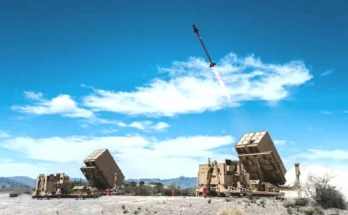
The U.S. Army has announced the finalists in its competition to replace the aging Bradley infantry fighting vehicle (IFV). Formerly known as the Optionally Manned Fighting Vehicle (OMFV), the service announced that the new vehicle will be designated the XM30 Mechanized Infantry Combat Vehicle. The XM30 will be the Army’s first armored combat vehicle powered by a hybrid-electric engine.
In late June, the Army announced that General Dynamics Land Systems and American Rheinmetall had been chosen to move forward into the detailed design phase. Under the contracts, worth a total of $1.6 billion, the two companies will further develop their designs before beginning the production of up to 11 prototypes for testing in the first quarter of 2025. The service will select a winning design in 2027, with fielding to follow in 2029. The total program cost is estimated at $45 billion, although the total number of vehicles to be procured has not been finalized.
The service has not fully determined its requirements for the XM30 but is looking for a hybrid-electric engine and a suite of combat capabilities that include a 50-mm cannon in a remotely operated turret; machine guns; anti-tank guided missiles; an advanced third-generation forward-looking infrared sensor; and “intelligent fire control.” Integrated active protection systems, kitted armor and advanced signature management capabilities will be installed.
The XM30 will have a crew of two: A commander/gunner and the driver, supported by advanced autonomy technologies. It will be able to carry six soldiers, the same as the Bradley. The C-17 airlifter will be able to carry two XM30s at the same time.
The downselect is a major milestone in the Army’s effort to replace the Bradley, after several previous programs failed to advance.
The Bradley IFV was introduced in 1981 as a replacement for the lightly armored M113 armored personnel carrier. The Army has now been trying to replace the aging system for nearly two decades, including as part of the wide-ranging Future Combat Systems (FCS) program, which was canceled in 2009.
The Defense Dept. subsequently launched the Ground Combat Vehicle (GCV) program a year later. It was axed in 2014 due to budget constraints. The first attempt under the Optionally Manned Fighting Vehicle (OMFV) program began in 2017. The initial solicitation was terminated in 2019. A second try died in 2020 after only a single bid was received in time.
The latest effort kicked off in July 2021, when the Army awarded contracts to five companies: General Dynamics Land Systems; BAE Systems; Oshkosh Defense; American Rheinmetall; and Point Blank Enterprises, for digital design proposals. It now appears to be moving forward with offerings from General Dynamics and American Rheinmetall.
The Army is still a long way from replacing the Bradley. While it has successfully chosen two finalists, there is much work to be done before any prototypes are ready for trials and plenty of opportunities for problems to arise that create new delays. If the Army has learned its lessons from previous failed programs, it will acquire an advanced and highly capable IFV providing enhanced operational effectiveness and survivability on the battlefield.
This article was originally published on our sister site, Military Periscope, the world’s easiest-to-use, up-to-date, open-source military database covering weapon systems and armed forces from around the world.
Aja Melville is an accomplished editor and analyst with expertise in open-source intelligence (OSINT) and database management. As the Weapons Editor and Analyst at Military Periscope, Aja has applied her analytical skills and in-depth knowledge in military affairs and global defense sector advancements, particularly focusing on China and the Asia-Pacific region.
Aja's commitment to international relations and Asia-Pacific focus is highlighted by her educational background. She holds a Bachelor of Arts in International Relations and Chinese Language from Bard College, complemented by a Certificate of Advanced International Studies from the Bard Globalization and International Affairs Program. Aja further expanded her linguistic skills with a Certificate of Intensive Language Studies in Chinese (Mandarin) from Qingdao University.





